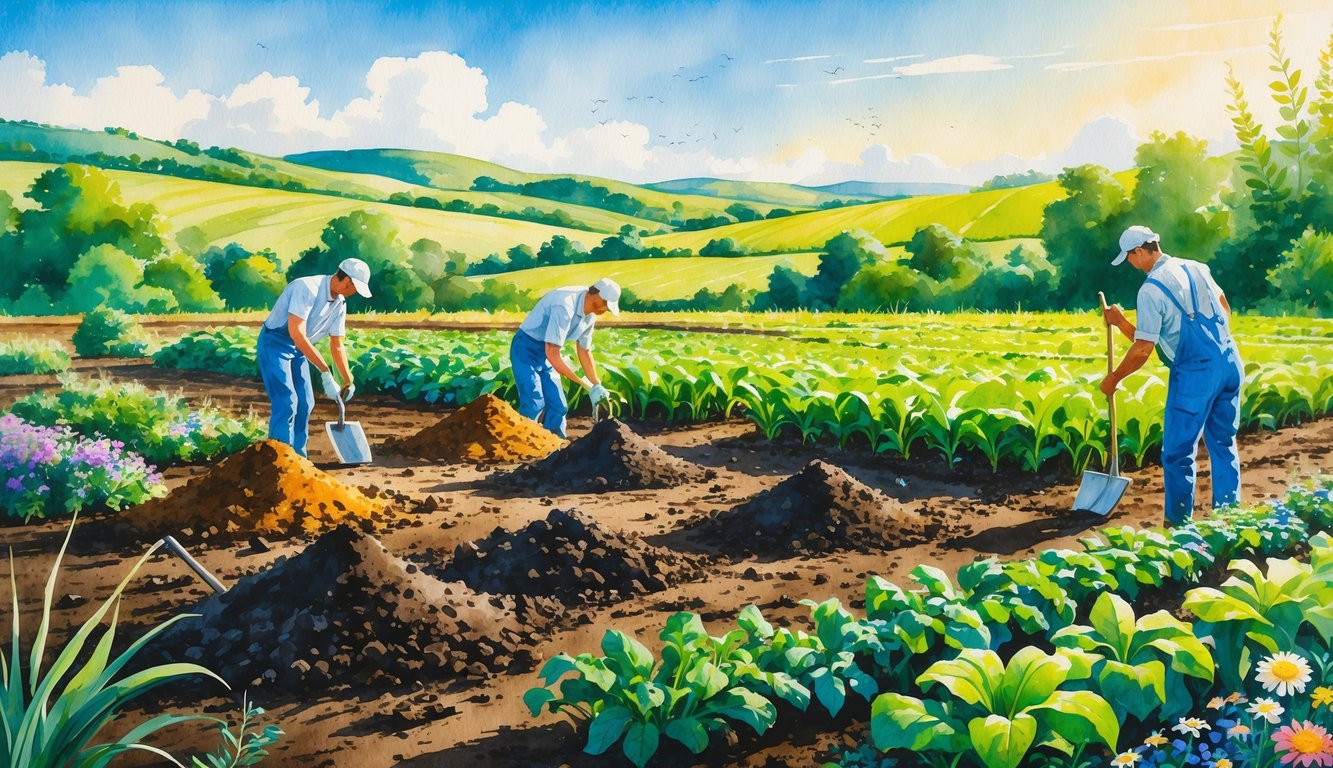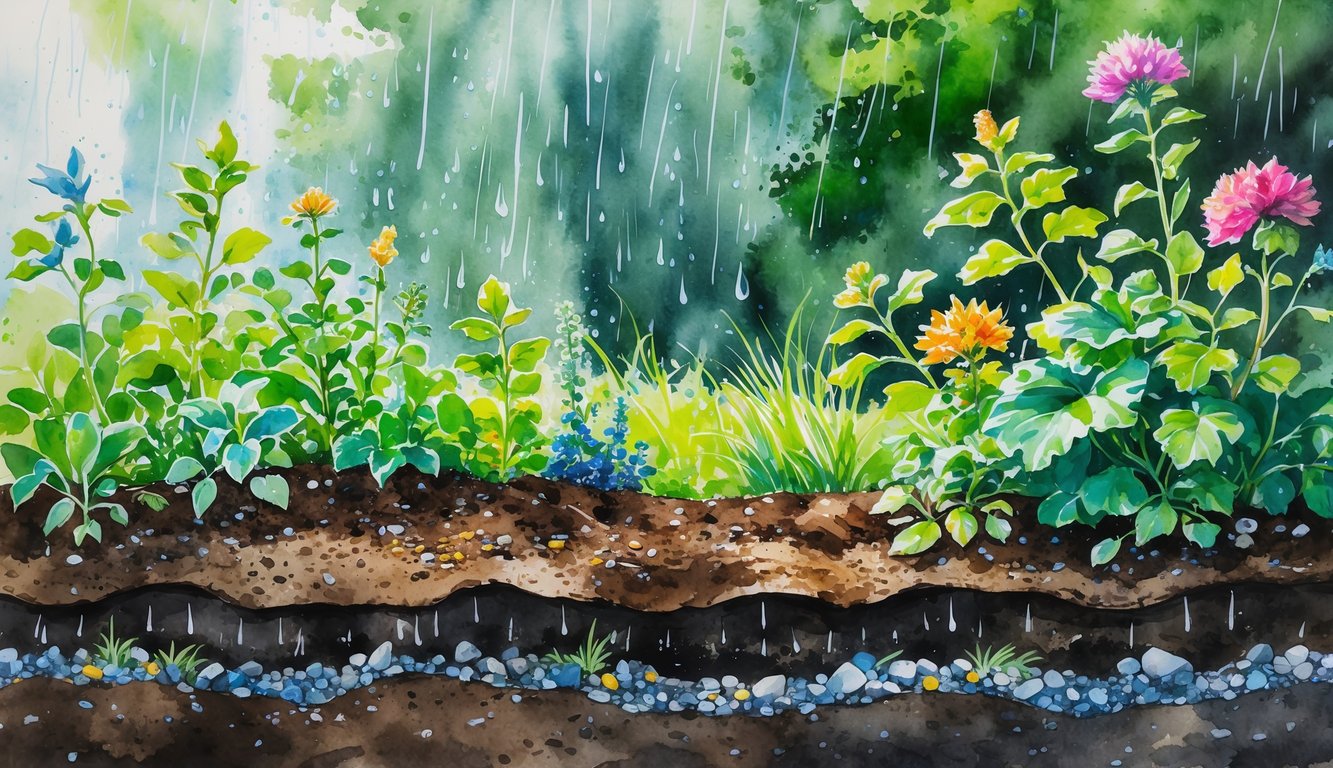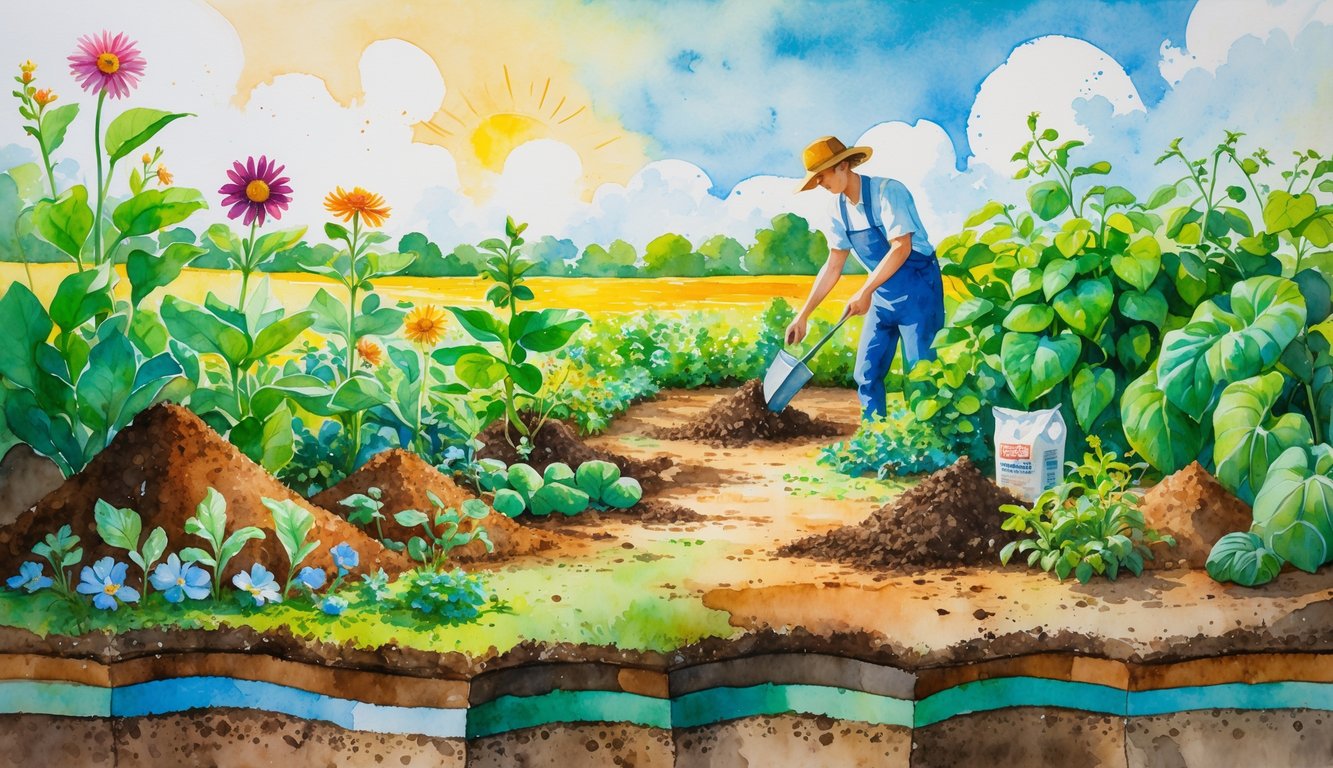
Boosting Moisture Retention and Drainage

I’ve lost track of how many beds I’ve ruined by watering and watching the soil either dry out in an hour or stay soggy on top, bone dry underneath. Fixing moisture? Not as simple as people pretend. Peat moss is magic—unless you’re allergic. Coconut coir holds water and drains, but every “expert” insists their favorite is the only way.
Managing Sandy Soils and Poor Drainage
Sandy soils are relentless. Water runs straight through. Some guy at a seminar said sand fixes itself with enough organics—compost, worm castings, coffee grounds (ask first, don’t just grab a bag from the café). I dumped wheelbarrows of compost, saw plants perk up, but only after mixing in coconut coir. That stuff expands, holds water, lets roots breathe. No more standing around, begging for rain.
Vermiculite? Easy to overdo. Too much and you’re swimming, not gardening. Clay soils? Opposite problem. I mix coarse sand and organics or end up with bricks. Expanded shale is pricey, but it works—$35 for four cubic feet, fewer dead roots.
Mulching and Moisture-Holding Amendments
Mulch. I could go on for hours. Wood chips, bark, pine needles—two inches thick, keeps soil cool, cuts evaporation, blocks weeds. In hot areas, shredded leaves or straw work best. Thin mulches dry out, and plastic mulch? Disaster. Cooked everything in a heatwave.
Coconut coir again—mix it in, layer it on top, suddenly you’ve solved water and airflow. I bounce between peat moss (great for water, but acidic—rhododendrons love it) and vermiculite for pots. Dr. M. Hernandez at LandTech said 10% amendment in raised beds boosted water holding by 40% over bare soil. Still, nothing fixes forgetfulness—my neighbor skips mulching, then wonders why everything dries out. Three emails every summer. Next year, I’m ignoring him.
Balancing Soil pH for Optimal Plant Growth

So here’s what still drives me nuts: “balanced” soil turns weirdly acidic or alkaline overnight, even if you think you did everything right. pH isn’t just a number in the background—it’s the whole deal. Mess it up, watch nutrients vanish, tomatoes sulk, leaves go yellow, and suddenly you’re googling symptoms instead of harvesting anything.
Adjusting With Lime, Gypsum, and Sulfur
It’s harvest crunch, and I’m still side-eyeing neighbors who fling pelletized lime everywhere, probably expecting magic. You ever read University of Minnesota Extension’s soil bulletins? Half the folks around here don’t. Not all lime is the same—calcitic lime (that’s the calcium carbonate stuff) will nudge your pH up, but dolomitic lime? It drags magnesium along for the ride, which, sure, might help clay, but nobody’s even glancing at CEC before dumping it. I keep repeating myself—grind size matters. Finer lime? Works faster. Chunky stuff? Might as well toss gravel and wish.
Gypsum, wow, it’s everywhere. “Improves structure!” the ads scream, but it doesn’t really budge your pH, no matter what the bag claims. What it does well: boots sodium out of saline soils, so roots can finally breathe and water drains instead of puddling. For dry spots, I’ll use sulfur, but only if my $25 digital probe (not those useless color strips) tells me high pH is wrecking micronutrients. Sulfur oxidizes, microbes chew through it, pH drops. But too much? Aluminum sulfate acts like it’s on fast-forward—seen azalea growers roast their own soils because nobody checks base saturation first. Who has time for that, right?
Managing Acidic and Alkaline Soils
Tried raising blueberries in Midwest loam? It’s a joke. No sulfur, no berries, just disappointment. Most crops want pH in the 6.2-7 range—corn yields tank (Iowa State’s got data, look it up) below 5.6, and fungus drama just explodes. Treating alkaline soils, like those salty sodic patches? Gypsum again, but don’t expect pH miracles; it just strips sodium, lets calcium do its thing. Sulfur helps yank pH down if you’re feeling lucky, but in sandy fields? I’m double-checking for leaching because I don’t need nutrients vanishing into the aquifer.
Acidic trouble zones, all rain-washed and starved, get a blast of pelletized lime from me—not ag lime, that’s too slow. I’ll blend it in shallow, hands dirty, and ignore the liquid lime Instagram crowd—half those sprays are just hype. High acidity locks up phosphorus and unleashes aluminum toxicity so fast it’s almost funny. Quick test strips show the difference in days. Still, I see people blaming yellow leaves on nitrogen, then dumping more urea and making the pH even worse. Test your soil, seriously. Every year or two. Otherwise, your best acres just fade out while you’re busy guessing.
Maximizing Soil Fertility and Nutrient Availability
I’ve got fertilizer bags piling up in the garage, and guess what? Still chasing nutrient imbalances. Makes no sense. You think you’ve fixed it, but the next crop’s either thriving or just sulking. Nutrient holding, picking the right source, and some old-fashioned detective work matter way more than that shiny new probe from the catalog (ask anyone who’s actually worked a field, not just sat at a desk).
Enhancing Nutrient Holding Capacity
CEC (cation exchange capacity)—nobody explains it right. The numbers on your soil test? Might as well be lottery tickets until you watch nitrogen disappear after one rain. Sandy fields just let potassium and magnesium vanish. I’ve watched $400 worth of compost outperform synthetic fertilizer twice the price, just because it stays put.
Organic matter is the only thing that’s ever worked for me long-term. Compost, crop residues, whatever—organic molecules glue nutrients in place and feed the bugs. Gypsum “cures compaction,” they say, but I only trust it for sodic clays. Honestly, results vary. Higher organic matter keeps micronutrients around, not just the big stuff—Dr. Paul Fixen’s field trials (ASA 2022, check it) back me up.